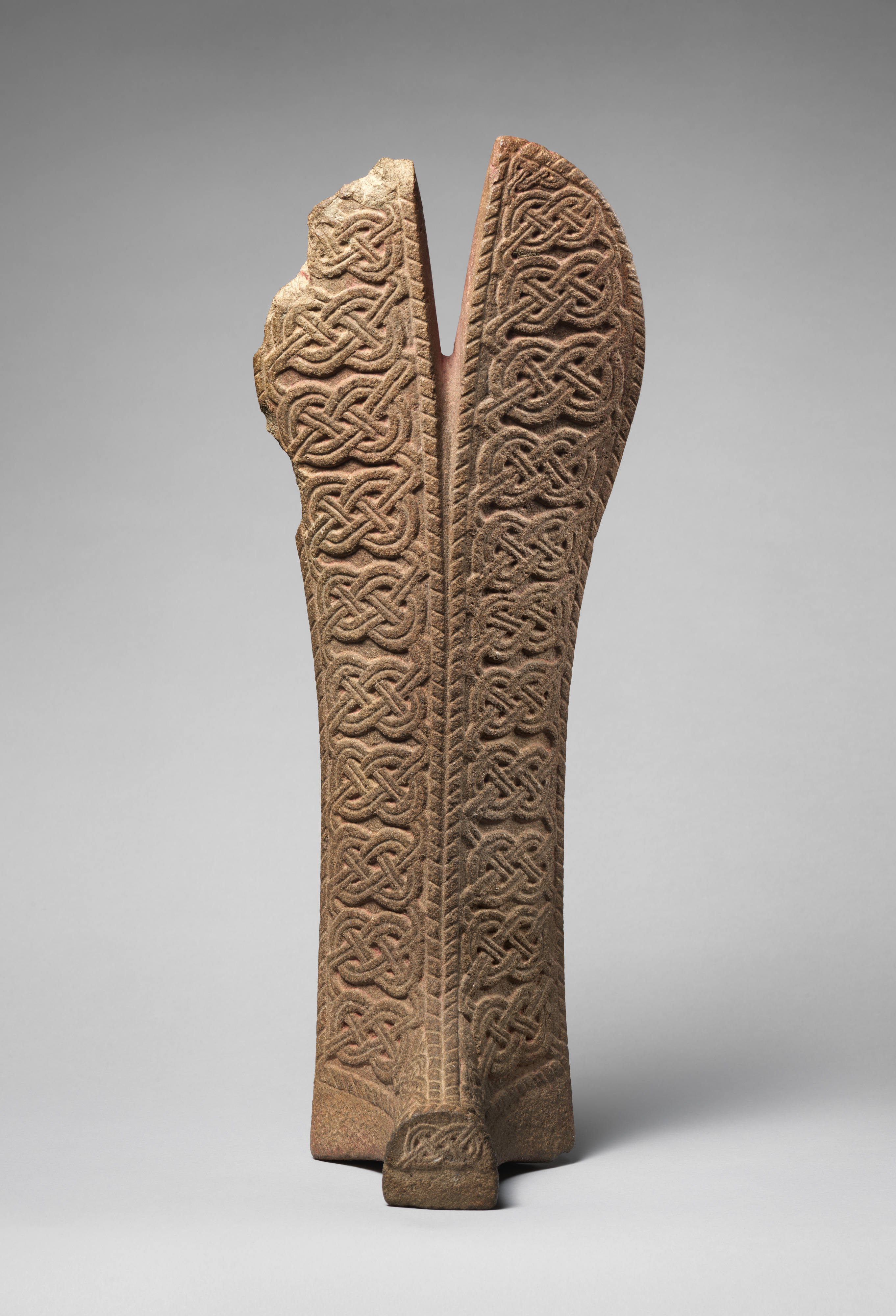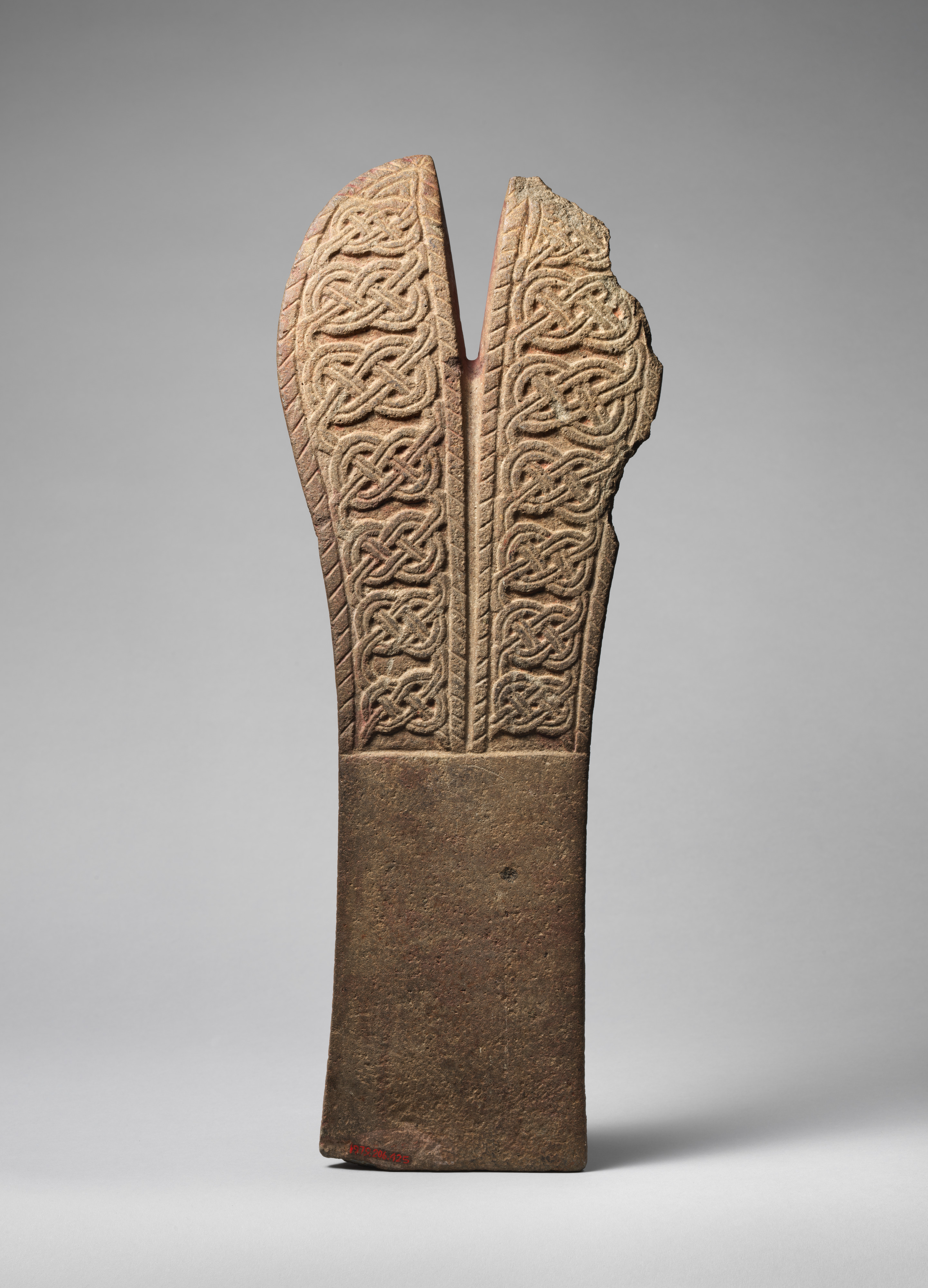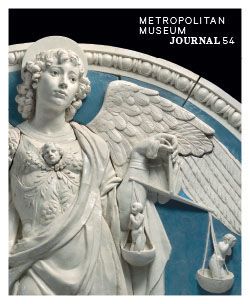Palma with textile motif
Not on view
Depictions of Mesoamerican ballplayers show them wearing some form of protection against the impact of the game’s solid rubber ball. In the Gulf Coast region of Veracruz, the probable origin of this and most other stone ballgame sculptures, protection was focused on the hips and torso. Palmas like this one would have been placed on top of a yoke encircling the player’s hips, to shield the chest area. Carved from stone, such palmas and other sculptures representing ballgame gear (see MMA 1978.412.15, 1978.412.151) were probably too heavy and awkward to wear during the game itself and were most likely reserved for ballgame-related rituals or given as trophies to victorious players. Most scholars believe that the protective gear worn during the game was made of lighter materials such as wood, leather, or cotton-padded cloth, and held in place with rope or cloth bands, as illustrated in Maya depictions of the game found on ceramics and relief sculpture. In its knotted textile and twisted rope motif, this stone palma, most likely created for ceremonial use, directly references both the form and the materials of the gear worn during the game itself.
The tall, undulating shape of palmas like this one resembles a palm frond and has given this group of ballgame-related stone sculptures their modern name. There is a deep split at the top, a division emphasized by red pigment and a twisted rope motif that edges the palma and frames the left and right sides on both the front and upper back surfaces. The verticality of the palma form is further enhanced by the relief composition. Knots and connecting threads alternate from top to bottom, their size contracting and expanding to conform to the curved outline of the palma. Only a single knot on the small projecting section at the bottom stands alone. Each knot is depicted as loosely intertwined, rather than pulled tight, displaying its structure and emphasizing the process used to create the hand-woven cloth. A net or textile formed in this way would have additional rows of knots set on a diagonal, creating a web of diamond-shaped openings like those seen here between each knot. Fragments of such textiles constructed using this and similar netting techniques have been found in Mesoamerica and could have come from items of clothing or utilitarian objects such as fishing nets and carrying bags.
Designs on the back of palmas are rare. Some cover the entire rear surface; others, like this one, are limited to the top half. The relief sculpture on the Central Ballcourt of El Tajín depict palmas worn so that they angle away from the chest, making the uppermost area of the back surface visible, if only to the wearer.
Patricia J. Sarro, 2022
Further reading
Ceremonial Sculpture of Veracruz. New York: Long Island University, 1987.
Earley, Caitlin C. "Stone Sculpture and Ritual Impersonation in Classic Veracruz." Metropolitan Museum Journal (2019), pp. 8-25, fig. 5.
Koontz, Rex. Lightning Gods and Feathered Serpents: The Public Sculpture of El Tajín. Austin: University of Texas Press, 2009.
Leyenaar, Ted J.J. Ulama, Jeu de Balle des Olmeques aux Azteques - Ballgame, from the Olmecs to the Aztecs. Lausanne: Musée Olympique, 1997.
Reents-Budet, Dorie (ED.) Painting the Maya Universe: Royal Ceramics of the Classic Period. Durham, N.C.: Duke University Press, 1994.
Schele, Linda and Mary Ellen Miller. "The Ballgame." In The Blood of Kings. New York: George Braziller, 1986, pp. 241-264.
Scott, John F. "Dressed to Kill: Stone Regalia of the Mesoamerican Ballgame." In The Sport of Life and Death, The Mesoamerican Ballgame, E. Michael Whittington, ed, pp. 50-63. New York: Thames and Hudson, 2001.
Shook, Edwin M. and Elayne Marquis. Secrets in Stone: Yokes, Hachas and Palmas from Southern Mesoamerica. Philadelphia: American Philosophical Society, 1996.
Turner, Andrew D., and Payton Phillips Quintanilla. “Collecting and Constructing Classic Veracruz: Earl Stendahl, Guillermo Echaniz, and the Market for Mesoamerican Stone Ballgame Objects.” Journal for Art Market Studies, 2023.
Von Winning, Hasso and Nelly Gutiérrez Solana. La iconographía de la cerámica de Río Blanco, Veracruz. Mexico City: UNAM Instituto de Investigaciones Estéticas, 1996.
Whittington, E. Michael, ed. The Sport of Life and Death: The Mesoamerican Ballgame. New York: Thames and Hudson, 2001.
Due to rights restrictions, this image cannot be enlarged, viewed at full screen, or downloaded.
This artwork is meant to be viewed from right to left. Scroll left to view more.







